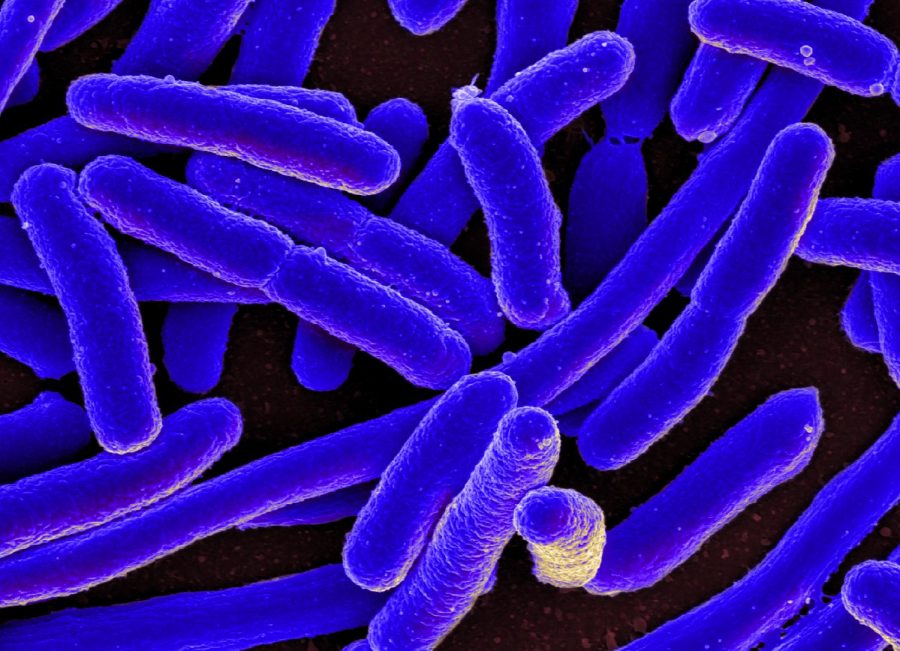The CDC’s steps to protect the food supply
This colorized scan of Escherichia coli was taken of a lab-grown sample to be used for testing.
One of the last things anyone wants in their food are harmful viruses and bacteria. However, reports of E. coli and Salmonella are not rare in modern-day America. These outbreaks are very difficult to trace, but are very important in protecting America’s average consumer.
The CDC traces outbreaks through a time-consuming and labor-intensive process. First, when a large number of people are admitted to hospitals at the same time for the same reasons, this raises possible suspicions of a foodborne outbreak. These people are interviewed in order to extract details of the food they’ve eaten in the past weeks. When descriptions all point to a particular food, brand or restaurant, the system can move forward to trace the disease back to the source. CDC agents are extremely careful in this process, going through four out of the seven steps of the “Multistate and Nationwide Foodborne Outbreak Investigation” guide just identifying the food of interest. Each of these steps include a detailed guide of terms, websites and methods used to discover and prevent outbreaks.
The last three steps of the CDC’s “Multistate and Nationwide Foodborne Outbreak Investigation” seem to be the most important. The first is “Finding the Point of Contamination and Source of the Food”. The food of interest is traced all the way back to the kitchen it was prepared in. CDC investigators then interview the staff and cooks of details regarding the food handling, such as temperature, preparation methods and cleanliness of the kitchen. For very large or severe outbreaks, the CDC works with agents of the FDA and USDA. The next step occurs when the specific food is traced back to its source and discovered. This is when the government releases recalls and announcements regarding certain foods so that citizens can avoid them, throw them out/ refund them or seek help from health professionals. Finally, the last step of the process is to decide when the outbreak has ended. This is decided when the tracked disease falls back to a normal number of cases.
For more information, visit the CDC website here.

He likes piano, drums, tennis, working out, and video games
What is his dream job?
His dream job is to be a doctor
What is his favorite music genre?
His favorite genre of music is alternative rock



